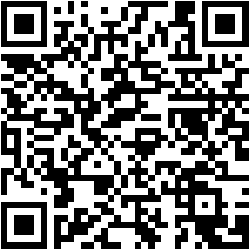BIP 0073: Difference between revisions
| Line 47: | Line 47: | ||
with a payment link that when clicked would open a wallet on the device). | with a payment link that when clicked would open a wallet on the device). | ||
It is not | It is not required that the client and server support the full semantics of an | ||
HTTP Accept header. If application/bitcoin-paymentrequest is specified in the | HTTP Accept header. If application/bitcoin-paymentrequest is specified in the | ||
header, the server should send a payment request regardless of anything else | header, the server should send a payment request regardless of anything else | ||
Revision as of 13:14, 28 August 2013
|
This page describes a BIP (Bitcoin Improvement Proposal). |
BIP: 73 Title: Use "Accept" header for response type negotiation with Payment Request URLs Author: Stephen Pair <stephen@bitpay.com> Status: Draft Type: Standards Track Created: 27-08-2013
Abstract
This BIP describes an enhancement to the payment protocol (BIP 70) that addresses the need for short URLs when scanning from QR codes. It generalizes the specification for the behavior of a payment request URL in a way that allows the client and server to negotiate the content of the response using the HTTP Accept: header field. Specifically, the client can indicate to the server whether it prefers to receive a bitcoin URI or a payment request.
Implementation of this BIP does not require full payment request (BIP 70) support.
Motivation
The payment protocol augments the bitcoin: uri scheme with an additional "payment" parameter that specifies a URL where a payment request can be downloaded. This creates long URIs that, when rendered as a QR code, have a high information density. Dense QR codes can be difficult to scan resulting in a more frustrating user experience. The goal is to create a standard that would allow QR scanning wallets to use less dense QR codes. It also makes general purpose QR code scanners more usable with bitcoin accepting websites.
Specification
QR scanning wallets will consider a non bitcoin URI scanned from a QR code to be an end point where either a bitcoin URI or a payment request can be obtained.
A wallet client uses the Accept: HTTP header to specify whether it can accept a payment request, a URI, or both. A media type of text/uri-list specifies that the client accepts a bitcoin URI. A media type of application/bitcoin-paymentrequest specifies that the client can process a payment request. In the absence of an Accept: header, the server is expect to respond with text/html suitable for rendering in a browser. An HTML response will ensure that QR codes scanned by non Bitcoin wallet QR scanners are useful (they could render an HTML page with a payment link that when clicked would open a wallet on the device).
It is not required that the client and server support the full semantics of an HTTP Accept header. If application/bitcoin-paymentrequest is specified in the header, the server should send a payment request regardless of anything else specified in the Accept header. If text/uri-list is specified (but not application/bitcoin-paymentrequest), a valid Bitcoin URI should be returned. If neither is specified, the server can return an HTML page. When a uri-list is returned only the first item in the list is used (and expected to be a bitcoin URI), any additional URIs should be ignored.
Compatibility
QR scanning wallets that do not support this BIP will not be able to process QR codes containing non bitcoin URIs. There are two possible workarounds: 1) the server gives the user an option to change the QR code to a bitcoin: URI or 2) the user scans the code with a generic QR code scanner.
This BIP should be fully compatible with BIP 70 assuming it is required that wallets implementing BIP 70 make use of the Accept: HTTP header when retrieving a payment request.
Examples
The first image below is of a bitcoin URI with an amount and payment request specified (note, this is a fairly minimal URI as it does not contain a label and the request URL is of moderate size). The second image is a QR code with only the payment request url specified.

